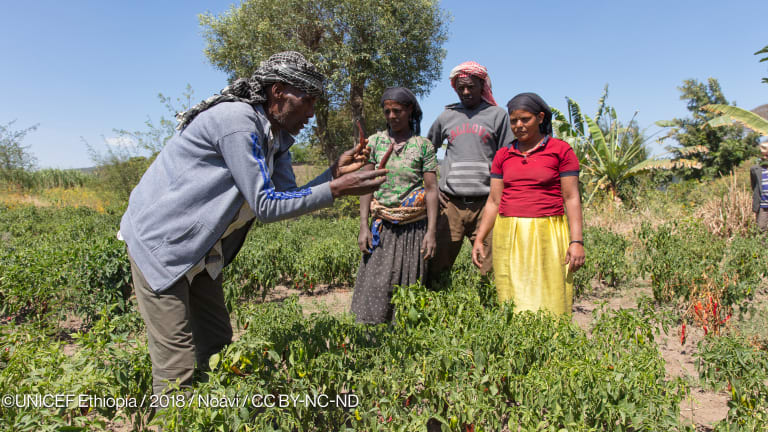
As climate change intensifies, the conversation around two of the most significant contributors — energy and transportation — has shifted. Once viewed as problems, these industries are now being reframed as solutions. It's time for us to take a similar approach to agriculture, a contributor to climate change that could potentially be one of our most powerful levers for reversing its course.
The agriculture industry has done a heroic job feeding a world population that last year passed the 8 billion mark. To sustain the 9.7 billion that’s expected by 2050, while actively promoting environmental sustainability — as opposed to simply reducing emissions — we need to invest in breakthrough agricultural innovations with the same gusto, focus, and creativity that we’ve applied to transform transportation and energy.
Policies such as the Biden administration’s Inflation Reduction Act have been instrumental in converting the energy industry into a climate solution, with more than 270 new clean energy projects announced in the past year. The same law points to a path forward in farming, with nearly $20 billion allocated toward climate-smart agriculture.
Policy initiatives such as these are critical. But we need more. Many more. As world leaders gather in the United Arab Emirates for the 28th United Nations Climate Change Conference, or COP 28, the transformation of global food systems will for the first time top the conference agenda. Here are three of the most promising avenues for this desperately needed transformation — and the policies, programs, and research agendas we need to unleash the earth-saving potential of the industry responsible for feeding the world.
1. Boosting soil health
Over the past 40 years, erosion, pollution, and poor farming practices such as overgrazing and fertilizer misuse have stripped the earth of a third of its arable land. If we continue with business as usual, we would need to cut down pristine forests to feed the growing global population — a devastating, short-sighted move that would only accelerate climate change.
It’s crucial that we maximize yields on existing farmland, and that we do so in a way that dramatically improves soil health.
Studies have shown that regenerative agriculture practices such as no-till farming and the use of cover crops can meaningfully boost soil health by reducing erosion, improving water retention, and allowing bio-organisms to flourish. Regenerative agriculture can also increase plants’ ability to function as carbon pumps, removing carbon from the atmosphere and sequestering — storing — it below ground.
However, we need further research into the specific techniques that farmers can employ, in varying climatic conditions, to maximize soil health, yields, and carbon capture. We need programs that give farmers the incentive to adopt and experiment with new practices and that guide and support them throughout the inevitably rocky transition period. We also need robust, reliable carbon markets that compensate farmers — the original stewards of our land —for the benefits they generate.
Several promising projects are underway that leverage regenerative agriculture to resuscitate land that’s already been depleted of nutrients, biodiversity, and topsoil. In one example, Syngenta is collaborating with The Nature Conservancy and local partners in China to transition 800,000 hectares of Chinese farmland to sustainable practices by the end of 2023. This project, called Run Tian — meaning fertile land — is designed to advance soil health in the Huang-Huai-Hai region of North China by demonstrating the agronomic and economic viability of reduced and no-till field management.
Projects such as these are not simple. They involve deep, ongoing relationships with farmers and carefully structured financing arrangements to ensure that farmers profit from their efforts. Such projects require sustained soil health monitoring and continual adjustments based on what’s working and what’s not. And these projects cannot achieve meaningful scale around the world without the cooperation of all parties — including banks, nonprofits, governments, and farmers — in developing and implementing realistic, long-term land restoration and reclamation plans.
At the same time, we’re just beginning to understand the complex underground ecosystem and its potential to make a positive impact on life above ground. Every university and research institution involved in the life sciences or climate study should have a team devoted to exploring soil health. And every company throughout the food value chain should partner with farmers on experimental programs aimed at understanding and enriching soil health.
2. Driving digital innovation
Across all industries, organizations are using data-driven insights to make smart, precise decisions based on real-time information. They’re implementing those decisions with user-friendly technologies that incorporate artificial intelligence, machine learning, edge computing, and robotics. We need a proliferation of such solutions for farmers and a parallel effort to encourage widespread adoption — including by many of the world’s 600 million smallholder farmers.
Such solutions can range from John Deere’s fully autonomous tractor to the new digital tools that a vanguard of farmers have adopted. These hardware and software tools use data from satellites, sensors, and historical archives to help farmers determine which supplements are needed to nurture and protect their crops, as well as precisely when, where, and in what quantities to apply them.
Digital innovations such as these enable farmers to practice “precision agriculture,” in which chemical and natural supplements are applied in the precise amounts needed to ensure healthy yields. This approach can turbocharge farming efficiency, which is a must if we’re going to grow more food on the same amount of land with fewer chemicals. It’s imperative that we rapidly accelerate the pace of digital innovation in farming by encouraging further investment in the ag-tech sector and related research and development.
3. Supporting genome editing and biologicals
Genome editing, or gene editing, uses recent scientific advances to accelerate the traditional plant breeding process. Unlike genetically modified organism, or GMO, technology, gene editing works with a plant’s own genetic variation to either amplify or suppress the expression of particular characteristics in a precise way. Results can include better taste, longer shelf life, and improved water retention as well as higher resilience to pests, diseases, and climate pressures.
The European Parliament and the Council of the European Union are currently reviewing a proposal to reverse its ban on products developed using gene editing. Approval of this proposal, alongside measures to help consumers understand the distinction between GMOs and genome editing, will spur further innovation in this area.
Biologicals — agricultural technologies that harness nature to protect and improve the health of food crops — are another promising category. In the European Union, biocontrols are currently subject to the same rigorous evaluation process as chemical pesticides. This stifles innovation and denies millions of farmers access to these products, which are naturally occurring materials used to control fungal and bacterial diseases, insect pests, nematodes, and weeds. In contrast, there are new EU rules that help the use of biostimulants, which are naturally derived materials that can be applied to plants, seeds, or the root environment to stimulate plants’ natural processes. Biostimulants improve overall crop quality by enabling plants to use nutrients more efficiently and to better withstand abiotic stresses such as drought and extreme heat.
Regulators in the agricultural countries in the Americas have been more open to gene editing and the use of biologicals, potentially serving as inspiration.

Unleashing innovation
The ubiquity of bike lanes, electric vehicle charging stations, LED bulbs, and solar roofs illustrates our collective reimagination of the energy and transportation sectors as climate solutions. The agriculture industry needs the equivalent of the electric car, the wind turbine, photovoltaic solar cells, and renewable diesel. But — perhaps because most consumers never see the work that farmers do to put food on our tables — the industry’s role is only now being addressed in a serious way at gatherings like COP.
The magnitude of the agricultural transformation now required goes far beyond reducing emissions from on-farm vehicles and facilities. If we get this right, as a society we can develop breakthrough innovations in seeds, solutions, products, and practices that reshape farming into a powerful lever for achieving environmental sustainability.
This will require trust and investment in farmers, deep partnerships across the political and organizational spectrum and talent of the highest caliber. It won’t be easy. But if we want to feed the world while also saving the earth, it’s an opportunity we can’t afford to miss.
For more information about Syngenta’s work, visit our website.
Update, Dec. 7, 2023: This article has been updated to clarify that the Council of the European Union is also reviewing the proposal to reverse the ban on products developed using gene editing and extra reporting on biocontrols.








